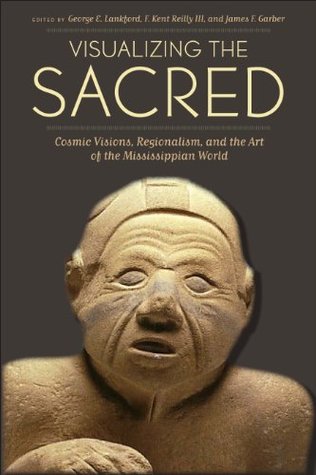Kindle Notes & Highlights
Read between
December 9 - December 22, 2020
two copper gorgets exhibiting the swirling cross (Fig. 12.9), the single copper gorget...
This highlight has been truncated due to consecutive passage length restrictions.
Consistent with their presumed Moundville origin, most of these pieces refer...
This highlight has been truncated due to consecutive passage length restrictions.
Despite the presence of nonlocally produced copper artifacts in the region, particularly in Etowah’s Mound C, evidence suggests that a local copper-working tradition developed in the Hightower regi...
This highlight has been truncated due to consecutive passage length restrictions.
The imagery of a series of copper plates and other objects from the Hightower region (mainly Etowah) does not comfortably fit in any of the known extraregional styles (Fig. 12.8c). These represent a corpus potentially created in a local copper-working style.
Included in this corpus are the same kinds of themes often associated with Classic and Late Braden imagery found elsewhere, such as the Raptor, the Birdman, the ogee, and the Piasa
these copper objects make reference to beings of the Above and Beneath Worlds as well as a means of tr...
This highlight has been truncated due to consecutive passage length restrictions.
What we think are chiefdom capitals begin to appear fairly early in the Hightower region in the Early Mississippian period.
Mound centers like Etowah and Sixtoe Field in northern Georgia were established around AD 1000, while Davis in eastern Tennessee was occupied by AD 1100. Interestingly, very few burials have been found at habitation sites, with or without platform mounds, throughout the region in these early contexts.
most people were buried in communal burial mounds located away from habitation sites, representing a continuation of the Late Woodland Hamilton burial practices. People buried in these mounds usually are interred with few if any grave goods. Consequently imagery executed in shell, copper, or any other medium has not been found in these early contexts.
Sometime late in the twelfth century, gorgets with the crib and other cross-in-circle and centering motifs begin to appear.
Centering motifs like the cross-bar diamond and the filfot cross appear in the area as early as AD 1100 and have predecessors that go back as early as AD 900
By AD 1200 both the political landscape and imagery of the region had changed. In Georgia the Etowah site and all other mound centers in the Etowah River Valley became abandoned and occupation on the Coosawattee River shifted a few kilometers from Sixtoe Field to Bell Field.
and Citico. Also at this time Muller’s Hightower style, with its Turkey Cock and spider themes, is recognizable as a distinct decorative style
The symbolism found on these Early Mississippian gorgets refers to themes that I will call universalizing.
the centering motifs, the Turkey Cock, and possibly even the spider theme all make reference to the same general conception of the structure of the cosmos. This kind of symbolism and the ideas behind it, such as fertility and a proper and orderly world, are not exclusive but instead refe...
This highlight has been truncated due to consecutive passage length restrictions.


